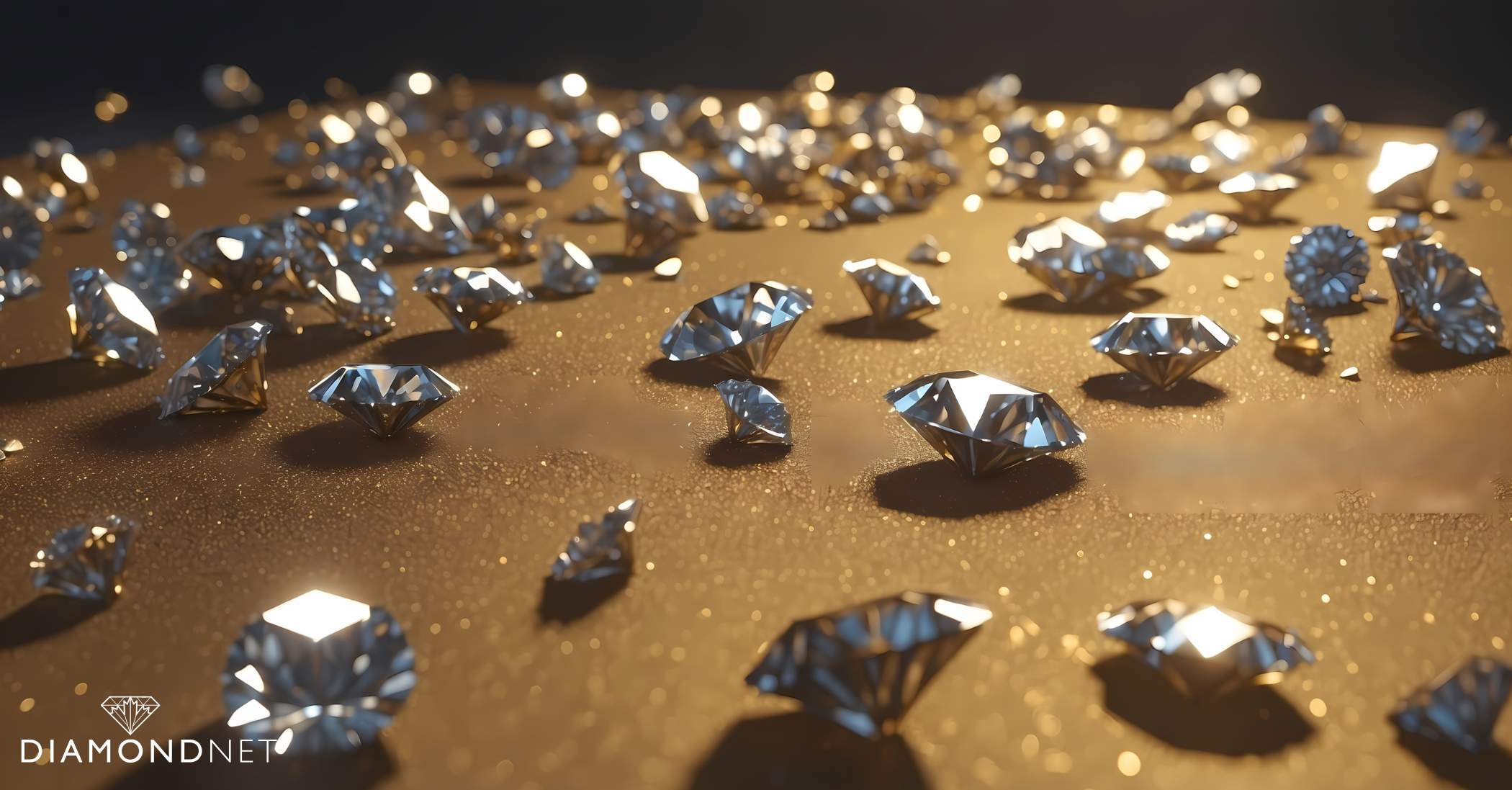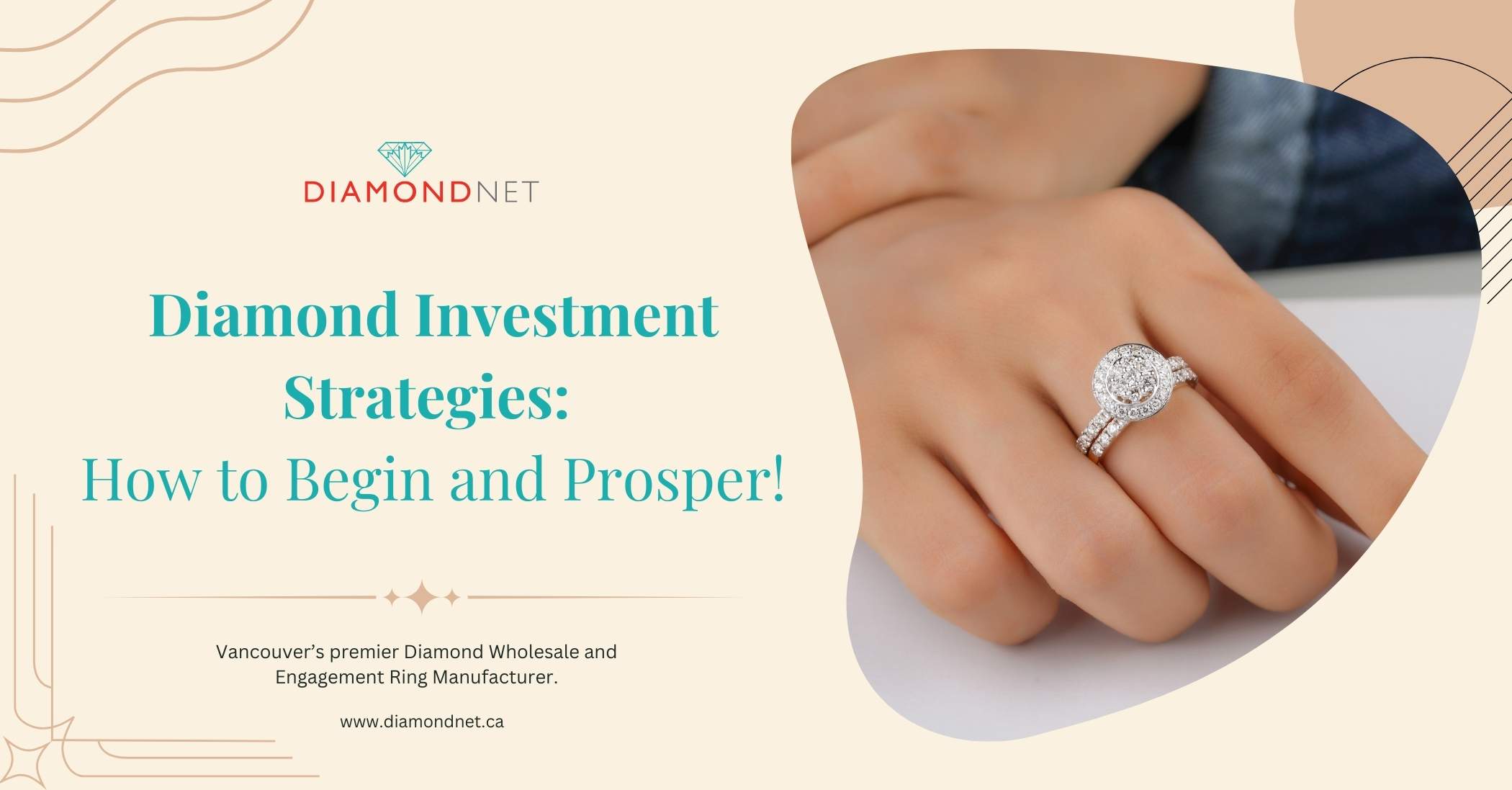Diamonds have long symbolized wealth and beauty, but in 2025, they are gaining recognition as a strategic investment asset. With the rise of lab-grown diamonds, an emphasis on sustainable sourcing, and shifting market dynamics, understanding the complexities of diamond investing has never been more crucial.
This guide explores effective strategies for investing in diamonds, offering insights into market trends, the critical role of diamond certification, and actionable steps to navigate this unique and rewarding market.
Whether you’re a seasoned investor diversifying your portfolio or exploring alternative assets for the first time, DiamondNet provides the expertise and personalized consultations to help you succeed in the evolving diamond market.
Understanding the Diamond Market in 2025
In 2025, the diamond market is evolving, shaped by key trends such as the rising popularity of lab-grown diamonds and shifting consumer priorities.
- Lab-Grown Diamonds: Praised for their affordability and sustainable production, lab-grown diamonds are becoming a compelling alternative to mined diamonds. Their growing acceptance among investors and consumers is reshaping market dynamics, offering new opportunities for those looking to diversify their portfolios.
- Consumer Preferences: Buyers are increasingly prioritizing ethical sourcing and certification, emphasizing the importance of transparency and long-term value. These preferences highlight the need for investors to understand the Four Cs of diamonds—cut, clarity, colour, and carat weight—which remain essential for evaluating quality and investment potential.
Navigating these changes requires informed decision-making. For personalized advice and tailored strategies, DiamondNet offers custom diamond investment consultations, guiding you in identifying opportunities that align with your financial goals.
Is investing in diamonds a good idea in 2025?
Investing in diamonds in 2025 offers unique advantages, but it also comes with specific risks that require thoughtful evaluation. Here’s a breakdown of the benefits and challenges to help you make informed decisions:
Benefits of Diamond Investing
Diamonds provide a distinctive opportunity to diversify portfolios with a tangible asset of lasting value:
- Portfolio Diversification: Diamonds act as a stable alternative to paper assets, reducing risk by adding variety to your investment portfolio.
- Tangible Value: Unlike many other assets, diamonds retain intrinsic value and are unaffected by currency fluctuations, serving as an effective hedge against inflation.
- Compact Wealth: High-value diamonds are portable and discreet, making them ideal for investors seeking a convenient and secure way to store wealth.

Risks of Diamond Investing
While rewarding, diamond investments come with potential risks that demand careful consideration:
- Market Volatility: Diamond prices can fluctuate due to changes in supply and demand, including the growing impact of lab-grown diamonds on market dynamics.
- Liquidity Challenges: Finding a buyer who matches the diamond’s quality and value can be time-consuming, affecting resale opportunities.
- Complex Valuation: Accurate valuation requires understanding the Four Cs—cut, clarity, colour, and carat weight—and verifying diamond certification to avoid overpaying or acquiring lower-value assets.
To navigate these opportunities and challenges, consider consulting with experts like DiamondNet, who provide personalized advice and strategies tailored to your financial goals. Their expertise ensures you can confidently make investment decisions in this unique market.
How does diamond investment compare to gold?
Investing in diamonds and gold requires evaluating key factors to determine which asset aligns with your financial goals. Both offer tangible value and portfolio diversification but differ in market behavior, accessibility, and risks.
Market Stability and Liquidity
- Gold: Known for its liquidity and price stability, gold is traded on regulated markets with transparent pricing, making it relatively easy to buy or sell.
- Diamonds: The diamond market is more fragmented, with pricing influenced by individual characteristics like the Four Cs (cut, colour, clarity, and carat weight). The resale market can be less liquid, requiring careful consideration of demand trends.
- Practical Tip: Research the secondary diamond market thoroughly before investing to understand pricing dynamics and demand.
Potential Returns
- Gold: Its value is primarily influenced by global economic conditions, making it a stable asset during financial uncertainty.
- Diamonds: Rare, certified, and in-demand diamonds can deliver significant returns, but success requires a nuanced understanding of the market.
- Practical Tip: Focus on acquiring certified investment-grade diamonds to maximize returns and minimize risk.
Portability and Tangibility
- Diamonds: Highly portable, a small, high-quality diamond can hold significant value, making it ideal for discreet storage.
- Gold: While valuable, gold is bulkier and heavier to store, making it less convenient than diamonds.
- Practical Tip: Ensure diamonds are securely stored and insured to protect them from theft or damage.

Market Drivers and Trends
- Gold: Driven by macroeconomic factors, gold remains a reliable investment tied to global economic performance.
- Diamonds: Consumer preferences, sustainability, and technological advancements drive the diamond market. For instance, lab-grown diamonds have surged in popularity, offering an ethical alternative to mined stones.
Investment Complexity
- Gold: Investments in gold are straightforward, requiring minimal expertise.
- Diamonds: Investing in diamonds demands a deeper understanding of factors like rarity, certification, and market trends, as well as the credibility of sellers.
- Practical Tip: Consult experts like DiamondNet for services such as Vancouver diamond jewellery consultations to guide your investment choices effectively.
Takeaway: Both gold and diamonds have unique advantages. Gold is ideal for those seeking stability and liquidity, while diamonds present opportunities for higher returns if approached strategically. To confidently diversify your portfolio, prioritize understanding diamond certification and stay informed about evolving market trends.
Steps to Start Investing in Diamonds
Investing in diamonds can be a rewarding endeavour when approached strategically. Here’s a comprehensive guide to help you begin your journey with confidence:
1. Set Clear Investment Goals
Define your objectives. Are you aiming for long-term appreciation, wealth preservation, or portfolio diversification? Clarifying your goals will help determine the right diamond types and investment strategies for you.
2. Educate Yourself Thoroughly
Understand the Four Cs\u2014cut, colour, clarity, and carat\u2014and their impact on value:
- Cut: Affects brilliance and light reflection; a well-cut diamond often commands a premium.
- Colour: Ranges from colourless (most valuable) to noticeable tints.
- Clarity: Refers to imperfections; fewer inclusions mean higher value.
- Carat: Determines size and weight but should complement the other Cs for maximum value.
Research how each factor influences pricing and desirability in the diamond market.
3. Work with Reputable Dealers
Choose trustworthy dealers like DiamondNet, renowned for transparency and ethical practices. Verify their credentials and inquire about ethical diamond sourcing to ensure your investment aligns with responsible mining and production standards.
4. Prioritize Certification
Purchase only diamonds with recognized certifications, such as those from the Gemological Institute of America (GIA) or the International Gemological Institute (IGI). Certification guarantees the diamond’s quality and authenticity, offering peace of mind.
5. Consider Market Trends
Stay updated on 2025 market trends, including the growing prominence of lab-grown diamonds and shifting consumer preferences. This knowledge can help you identify opportunities and avoid overpaying.
6. Start Small and Diversify
For beginners, start with smaller, certified stones to build experience. As you gain market knowledge, diversify your portfolio by investing in diamonds of varying shapes, sizes, and origins to mitigate risks.
7. Secure Storage and Insurance
Safeguard your investment with proper storage solutions, such as safety deposit boxes, and ensure adequate insurance coverage against theft or damage.
8. Seek Expert Guidance
Leverage the expertise of professionals or investment advisors specializing in diamond markets. Utilize custom diamond investment consultations offered by DiamondNet to develop a strategy tailored to your financial goals and market insights.
By combining education, strategic planning, and partnerships with reputable dealers, you can confidently enter the diamond investment market and position yourself for success in 2025.
Navigating the Diamond Market: How to Adapt Your Investment Strategies
Investing in diamonds is an ongoing process that requires staying informed about market trends and adjusting your strategies. The dynamic nature of the diamond market, influenced by factors like consumer demand, regulations, and technological advancements, makes adaptability crucial for long-term success.

Monitor Diamond Market Trends 2025
Keeping up with the latest diamond market trends is key to successful investing. In 2025, the market is undergoing significant changes driven by:
- Lab-Grown Diamonds: These are becoming a cost-effective alternative to natural diamonds, influencing pricing and reshaping investor approaches.
- Sustainability Priorities: The growing interest in ethical diamond sourcing is shaping consumer preferences and affecting diamond prices and demand.
Understanding how these trends align with market demands can help you make informed investment decisions that maximize returns while meeting evolving consumer expectations.
Adapt to Regulatory Changes
The diamond market is subject to evolving regulations that can impact pricing, trade opportunities, and overall investment value.
- Certification Standards: New requirements for certified investment-grade diamonds can influence their value and tradeability.
- Ethical Sourcing Scrutiny: Increased focus on the origins of diamonds is driving demand for conflict-free stones sourced from regulated areas.
Staying informed about regulatory developments enables investors to adjust their strategies, such as focusing on diamonds with updated certifications or incorporating lab-grown diamonds into portfolios to align with new standards.
Evaluate the Impact of Technological Advancements
Rapid advancements in technology are transforming how diamonds are sourced, graded, and traded:
- Blockchain Technology: Ensures transparency and authenticity in diamond transactions.
- Digital Platforms: Streamline trading processes and expand access to global markets.
Understanding these innovations can help investors capitalize on new opportunities and maintain a competitive edge in the evolving market.
Regularly Review Investment Strategies
To stay ahead of market shifts, regularly evaluate your portfolio and adapt to new developments:
- Diversify Your Collection: Consider diamonds of different types, shapes, or certifications to mitigate risks.
- Adjust Risk Profiles: Reassess your portfolio to align with your financial goals and market changes.
Leverage expert advice from trusted sources, such as personalized consultation services offered by DiamondNet, to navigate market complexities and optimize your investment strategy.
By staying informed about market trends, regulatory changes, and technological advancements, you can confidently adapt your diamond investment approach for success in 2025 and beyond.
Conclusion
Diamond investment offers a unique and rewarding opportunity to diversify your portfolio in 2025. By understanding essential factors like the Four Cs of diamonds, staying updated on market trends, and weighing the benefits and risks of diamonds compared to other assets like gold, you can position yourself for long-term success.
Adapting your investment strategies to align with evolving market dynamics is crucial. The growing popularity of lab-grown diamonds, increased emphasis on ethical sourcing, and advancements in technology are reshaping the diamond market. Staying proactive and informed ensures you can navigate these changes effectively.
By following these strategies and seeking expert guidance, you can maximize your returns and make diamonds a valuable cornerstone of your investment portfolio.



